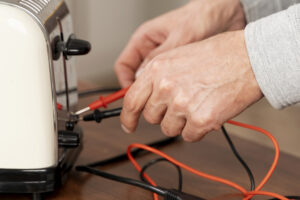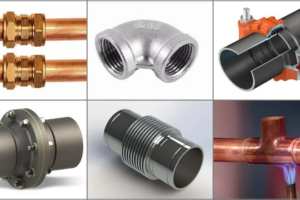
Automatic gates are an essential part of securing properties, providing convenience and peace of mind. However, when these gates fail to close properly, it can lead to security issues and frustration. If you’re experiencing problems with your industrial automatic gate it’s crucial to identify the causes and explore potential fixes. This article will cover common reasons why your automatic gate may not be closing as it should, along with solutions to help you get it back on track.
Common Causes of Automatic Gate Closure Issues
The first step to a remedy is figuring out why your automatic gate isn’t working properly. Listed below are a few typical causes:
1. Obstructions in the Gate Path
One of the most frequent reasons for an automatic gate not closing properly is obstructions in its path. Debris, dirt, or other obstacles can prevent the gate from fully closing. Regular maintenance and inspections can help identify and remove these obstructions.
- Solution: Periodically check the gate’s path for any debris or obstacles. Clear any items that might impede the gate’s movement.
2. Misaligned Sensors
Safety sensors on automatic gates are usually installed to keep them from shutting if something is in the way. These sensors can mistakenly identify an obstruction if they are not aligned properly, which would keep the gate from shutting.
- Solution: Inspect the sensors to ensure they are aligned correctly. Adjust their positioning as needed to ensure they function properly.
3. Damaged or Worn Components
Over time, the mechanical components of an automatic gate can wear out. This wear can result in difficulty closing the gate. Commonly affected components include hinges, rollers, and gears.
- Solution: Regularly inspect these components for signs of wear and tear. If you notice any damage, consider replacing the affected parts to restore functionality.
4. Power Supply Issues
An automatic gate requires a reliable power source to function correctly. Issues with the power supply can result in intermittent closing problems. This may include faulty wiring, blown fuses, or problems with the control panel.
- Solution: Check the power source and wiring for any signs of damage. If you find issues, consult a professional for repair or replacement.
5. Incorrect Programming
If your automatic gate system is equipped with programmable features, incorrect settings may prevent the gate from closing properly. This can occur after a power outage or when changes have been made to the programming.
- Solution: Review the gate’s programming settings to ensure everything is set correctly. Refer to the user manual for guidance on reprogramming if necessary.
6. Weather Conditions
Extreme weather conditions, such as heavy rain or snow, can affect the operation of an automatic gate. Water accumulation can cause components to freeze, leading to closing issues.
- Solution: During harsh weather, monitor the gate’s operation closely. If necessary, make adjustments or perform maintenance to ensure it continues functioning properly.
7. Lack of Regular Maintenance
Like any mechanical system, automatic gates require regular maintenance to ensure they operate smoothly. Neglecting maintenance can lead to various issues, including closing problems.
- Solution: Implement a regular maintenance schedule that includes checking and lubricating moving parts, inspecting the sensors, and cleaning the gate’s path.
Steps to Troubleshoot Your Automatic Gate
If your automatic gate is not closing properly, follow these troubleshooting steps to identify and resolve the issue:
Step 1: Conduct a Visual Inspection
Start by performing a thorough visual inspection of the gate and its surroundings. Look for any obstructions, damage, or misaligned components that could be causing the issue.
Step 2: Check the Sensors
Inspect the safety sensors to ensure they are clean and properly aligned. Use a soft cloth to wipe away any dirt or debris that may be obstructing their function.
Step 3: Test the Power Supply
Verify that the gate is receiving adequate power. Check for any blown fuses or damaged wiring, and ensure that the power source is functional.
Step 4: Review the Programming
If applicable, check the programming settings of your automatic gate. Ensure that everything is configured correctly and reset if necessary.
Step 5: Look for Signs of Wear
Examine the mechanical components of the gate for any signs of wear or damage. Replace any damaged parts promptly to avoid further complications.
Step 6: Clean and Lubricate
Regularly clean and lubricate moving parts to ensure smooth operation. Use appropriate lubricants designed for gates to prevent corrosion and wear.
When to Call for Professional Help
If you’ve gone through these troubleshooting steps and the issue persists, it may be time to seek professional assistance. Automatic gate repairs Australia can help diagnose and fix underlying problems that you may not be equipped to handle. Here are some signs that it’s time to call in the experts:
- Persistent Issues: If the gate continues to malfunction despite your troubleshooting efforts, a professional can provide a comprehensive assessment.
- Complex Repairs: Some repairs may require specialized knowledge and tools, such as electrical work or advanced mechanical repairs.
- Safety Concerns: If the gate poses a safety risk, it’s crucial to have it addressed by a professional to prevent accidents or injuries.
Final Thoughts
A malfunctioning automatic gate can be frustrating, but understanding the common causes and fixes can help you restore its functionality. Regular maintenance and inspections play a significant role in preventing issues and ensuring the longevity of your industrial automatic gate Australia. If you find yourself facing persistent problems or complex repairs, do not hesitate to seek the help of professionals who specialize in automatic gate repairs. With proper care and attention, your automatic gate can continue to serve its purpose effectively and safely.




